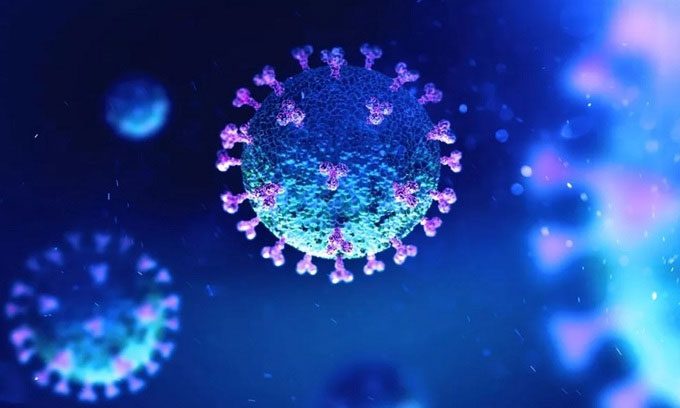If all the nCoV particles currently circulating in humans worldwide were gathered in one place, their weight would be between that of an apple and a child.
A recent study estimates that each infected person carries approximately 10 to 100 billion nCoV particles at peak infection. Thus, all the nCoV viruses infecting people around the globe (1 to 10 million cases at any given time during the pandemic) would have a total mass of 0.1 to 10 kg.

Researchers based their calculations on previous measurements to estimate the total mass of nCoV worldwide. (Photo: iStock).
“In a larger historical context, an atomic bomb contains less than 100 kg of fissile material,” said Ron Milo, a professor in the Department of Plant and Environmental Sciences at the Weizmann Institute of Science in Israel, and co-author of the study Ron Sender, a PhD student in Milo’s lab. “But look at the destruction it causes. Similarly, we’re talking about an incredibly small mass of virus, yet they are causing complete chaos around the world.”
Currently, nCoV has infected over 173 million people and caused more than 3.7 million deaths, according to Johns Hopkins University. To estimate how much virus each infected person might carry, the research team used previous measurements taken from rhesus macaques regarding the viral load at peak infection across various tissues vulnerable to the virus, including the lungs, tonsils, lymph nodes, and digestive system. They then multiplied the number of viral particles per gram of tissue in rhesus macaques by the mass of human tissue to estimate the number of viral particles in human tissues.
From earlier calculations based on the diameter of the virus, the research team noted that each viral particle has a mass of 1 femtogram (equal to 0.000000000000001 grams). Using the mass of each particle and the estimated number of particles, they calculated that at peak infection, each person carries approximately 1 to 10 micrograms of viral particles (1 microgram equals 0.000001 grams).
Calculating these figures helps the research team gain a better understanding of what happens in the human body during infection, such as the number of infected cells, the amount of virus produced in the body, and the evolutionary rate of the virus, according to Milo and Sender.
The researchers then calculated how many mutations the virus would undergo on average during an individual’s infection and across the entire population. To do this, they used previous estimates from a similar coronavirus, taking the frequency of nucleotide mutations multiplied by the number of nucleotides in the nCoV genome, then combining it with the number of times the virus replicates itself within the body during the infection process.
The research team found that within a single host, the virus accumulates approximately 0.1 to 1 mutation across its entire genome and about 3 mutations per month, consistent with the known evolutionary rate of nCoV. However, they also noted a significant variance in the number of viral particles among infected individuals. In reality, some infected individuals may carry millions of times more viral particles than others.
Milo and Sender hope this research will inspire new ideas and experiments. They published their findings on June 3 in the Proceedings of the National Academy of Sciences (PNAS).





















































